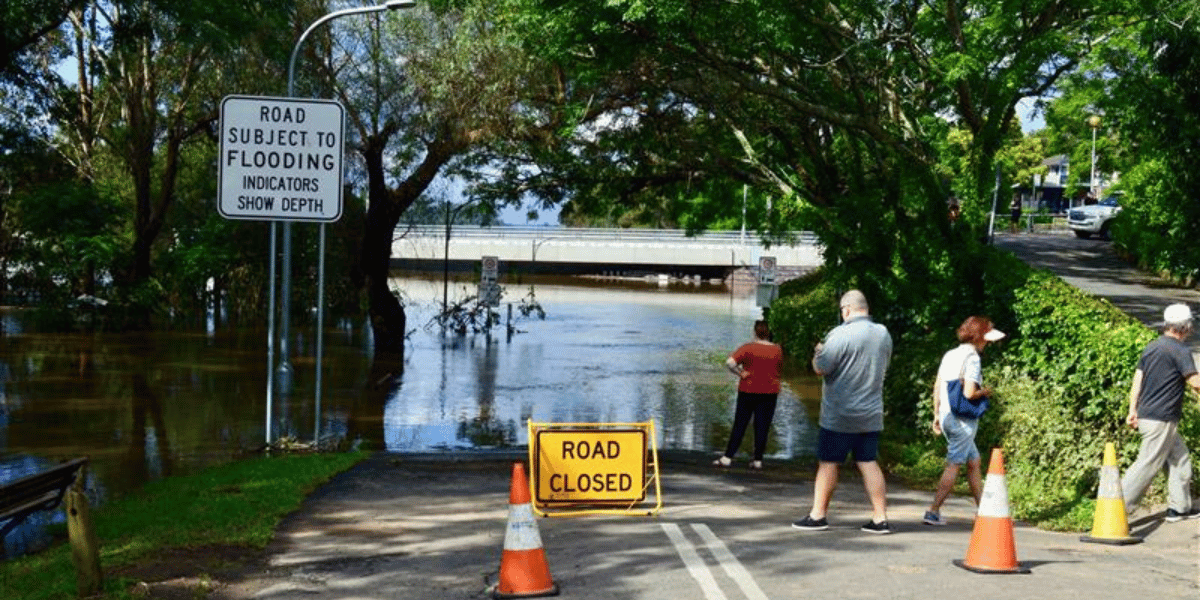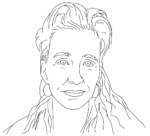
29 November 2023
Recent emergency responses to disasters in Australia, and specifically in New South Wales, have highlighted the importance of actively recognising and incorporating community knowledge and participation in disaster policy management. Communities frequently serve as the first responders to a disaster event, evidenced by the actions of the Lismore Tinny Army and the combined efforts of businesses and residents in the Hawkesbury region, however there remains a significant gap in articulating and implementing community involvement in emergency management policy and planning.
Current policy is guided by legislation dating as far back as 1989. In the aftermath of recent Australian disaster events, questions have been raised in the Royal Commission into Natural Disaster Arrangements and the report of the Climate Council and Emergency Leaders for Climate Action about the capacity of existing policy to integrate consistent and nuanced prevention, preparedness, response and recovery strategies that respond to escalating disaster events in the future.
The NSW Government’s Emergency Management Plan (EMPLAN) and Emergency Risk Management Framework (ERMF) form the policy framework for disaster management in NSW, underpinned by the State Emergency and Rescue Management (SERM) Act 1989. They are guided by a legislative foundation that does not include “community” as a stakeholder in disaster planning. There is no articulation of or commitment to an active and formalised role for community in decision-making processes. Instead, communities are mentioned in terms of the social, economic and infrastructure implications in a disaster, yet appear to be peripheral as a policy audience, and absent as decision-makers in policy design.
How is “community” currently conceptualised in emergency management law and policy?
Our research – backed by a JMI Policy Challenge Grant – explores how communities might share responsibility for emergency management planning and policy.
We recently examined the role of community in a suite of intersecting emergency policies driving emergency management in the Blue Mountains, Hawkesbury and Cabonne municipalities of NSW. The suite of documentation comprised: the NSW EMPLAN, the NSW ERMF, the Northwest Metropolitan and Central West Regional EMPLANs, and local EMPLANs for the Blue Mountains and Hawkesbury municipalities. In our analysis we adopted Carol Bacchi’s framework, which uses the question “What’s the Problem Represented to Be?” to explore how policy gives shape to a concept or issue. In our analysis, we identified community as the concept of interest, and examined the way it appeared, or remained absent, across this group of policy documents.
The NSW EMPLAN frequently emphasises the importance of community awareness and engagement in principle, but it lacks a clear commitment to the active involvement of communities, particularly in decision-making processes. There are no formal requirements, quotas or other measures that attempt to translate policy to practice. Current policy also frames communities as passive providers and recipients of information, rather than active participants in policy design and implementation. The policies emphasise that community knowledge should be shared with emergency management agencies to enhance their effectiveness, and communities are expected to receive information to take appropriate actions for self-protection. In both cases, a clear hierarchy of authority is evident, reinforcing the passive role assigned to communities in the decision-making process. Moreover, within the focus on community education lies apparent assumption that information about disaster processes will in itself lead to behavioural change.
The NSW EMPLAN pays attention to the interests of communities, and mentions “community” frequently, but the term remains undefined and its meaning ambiguous. Moreover, agencies’ responsibility for community engagement lacks acknowledgement of existing community engagement and resourcefulness.
Importantly, the legislation that underpins this policy framework, the SERM Act, does not explicitly promote community participation in emergency management, and lacks any direct mention of the term “community”. This absence both limits the legislative support for innovative policy efforts to increase community participation, and actively facilitates structures and functions that exclude communities from decision-making. The Act only mentions “community” once, in its definition of recovery as the “the process of returning an affected community to its proper level of functioning” (Part 1, section 5). It frames communities’ responsibilities as separate to and distinct from those of formal systems, challenging ideals of integration and overlooking the intricacies facing members of regional and rural communities who straddle both systems of emergency management.
The local EMPLANs we examined focused on formalised emergency management perspectives and agencies. They often fail to grant communities a formal role, beyond provision of demographic data, physical assets, and other (non-social) assets. In local policy documents (municipal EMPLANs) we see a further shift in the representation of community. Community consultation features across all local EMPLANs, however the operational information excludes community members from the decision-making process, raising important questions about the exclusion of community voices in emergency management planning. Of the local EMPLANs featured in this report, only Parts 1 (Administration) and 2 (Community Context) were publicly available, effectively excluding community members from Part 3 (Operational Information). To bridge the gap between policy and practice, a re-framing of such policies’ understandings of community is necessary.
These conventions pose challenges, particularly when it comes to incorporating community into emergency planning. In our experience, communities can be defined in various ways: in terms of shared interests and common goals and values, and along axes of social stratification such as age, ethnicity, culture, economic positioning, and gender. We must ask: how can planning include and incorporate the needs of diverse communities? And how can policy be tailored to specific geographic locales, which range in topography, climate, biodiversity, resources, infrastructure and residents?
Towards a model of “shared decision-making”
One model proposed in recent global discussions is “shared responsibility”. The Sendai Framework for Disaster Risk Reduction 2015-2030 emphasises the importance of “engagement from all of society” whilst acknowledging the state’s primary role in reducing disaster risk. However, the ideal of shared responsibility, while widely endorsed, can lead to disproportionate burdens on communities and the obfuscation of responsibility from government and its policy. Although shared responsibility is integrated into Australian national and regional policies such as the National Disaster Risk Reduction framework, our research found that shared responsibility has not been operationalised in the emergency management system.
Existing policies talk about communities, rather than to communities. They establish a hierarchical relationship between agencies and communities, where knowledge flows from agencies down to communities. Policies assume that agencies can effectively “combat” the impact of natural disasters and that they can access all the knowledge necessary to do so. Further, the “combat” approach assumes that agencies can handle the diverse range of factors that shape any one disaster. This approach oversimplifies the relationship between agencies and communities and does not recognise their interdependencies and complexities. For instance, a resident may simultaneously serve as an elected councillor and volunteer firefighter, blurring the lines between formal and informal roles within the community. People in this position may find themselves caught between grassroots “bottom-up” and hierarchical “top-down” ways of working.
Based on our research, it is imperative to clarify and refine the idea of community to encompass “shared decision making” within shared responsibility, to ensure a more balanced and effective distribution of responsibilities and input in disaster management. We found a significant disconnect between policy rhetoric and the practical integration of community participation. While the NSW EMPLAN emphasises community awareness and engagement, it falls short in committing to active community involvement, while local EMPLANs tend to exclude communities from decision-making processes.
An independent review of national natural disaster governance arrangements presents a pivotal opportunity to address existing conflicts and shortcomings. It is imperative to shift the focus from viewing the community as problematic, to identifying opportunities for collaborative effort based on mutual respect. This shift requires a reframing of community involvement in future policy development, to incorporate communities as equal and active partners throughout all phases of disaster management. We will explore the potential and implications of this reframing in a 2024 JMI Policy Insights Paper.
Dr Pam Joseph is a social worker and researcher. Pam’s current research interests include community resilience-building, the experiences of transition from large residential settings into community living, and the intersections of health, disability and complex care.
Dr Cate Massola is a socio-cultural anthropologist who works as a consultant and a postdoctoral researcher. Her research investigates matters relating to agency, value and change, based in everyday, human experiences.
Associate Professor Margot Rawsthorne has contributed to major policy debates at a national level for the past three decades, focusing on violence prevention, educational equity, social housing, and rural issues. Her current focus is on policy development that better supports communities affected by climate-change related disasters.
Professor Amanda Howard’s research is about work with communities. This work has led her to an ongoing exploration of climate change, disasters and inclusion. Amanda’s research currently involves mapping the emergence of informal networks over the disaster cycle, the way people self-organise in communities in the context of climate change and how to change power dynamics in the relationships between formal and informal systems.
Image credit: Getty Images
Features
Simon Rowell
Teddy Nagaddya, Jenna Condie, Sharlotte Tusasiirwe & Kate Huppatz
Subscribe to The Policymaker
Explore more articles
Ehsan Noroozinejad Farsangi & Hassan Gholipour Fereidouni
Jessica Cocks, Rob Ryan and Ben Spence
Features
Simon Rowell
Teddy Nagaddya, Jenna Condie, Sharlotte Tusasiirwe & Kate Huppatz
Explore more articles
Ehsan Noroozinejad Farsangi & Hassan Gholipour Fereidouni
Jessica Cocks, Rob Ryan and Ben Spence
Subscribe to The Policymaker










